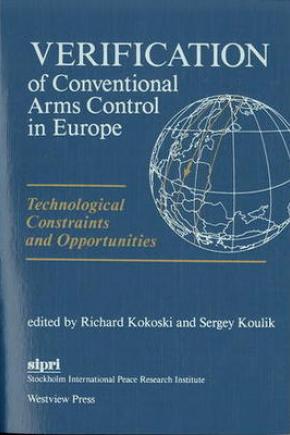Verification of Conventional Arms Control in Europe: Technological Constraints and Opportunities
The first of a projected two-volume study, this book provides an in-depth examination of the full range of methods for the verification of a conventional arms control regime in Europe. Offering contributions by specialists from both the East and West, it explores the technological aspects of verification as they relate to the proposals currently under consideration at the CFE talks in Vienna. Although it evaluates relevant technology, this book is primarily focused on the dynamics of successfully monitoring a European arms control agreement. Significant experience has been gained from other arms control regimes, most notably the INF agreement, which established a precedent for extensive on-site inspections. The contributors seek to identify the optimal mix of monitoring methods most applicable to the important items on the CFE agenda. The multilateral nature of the CFE negotiations presents the organizational challenges for the coordination of sharing information and technology to overcome the large discrepancies in verification technology expertise. Verification of Conventional Arms Control in Europe points toward a specific and attainable verification regime that could be incorporated into the present arms control negotiations.
Part I. Introduction
1. Introduction: Setting the stage
Richard Kokoski and Sergey Koulik
Part II. Verification technology and methods
2. National technical means
Richard Kokoski
3. Commercial and third-party satellites
Johnny Skorve
4. Aerial observation and overflights
Hartwik Spitzer
5. Short-distance sensors
Jürgen Altmann
6. Tags
Steve Fetter and Thomas Garwin
7. Monitoring production of conventional weapons
Ivan Oelrich
8. The Envelope Scheme
Klaus Jacob
9. Implementation of verification methods
Patricia M. Lewis
Part III. Methodological lessons learned: Other verification experience
10. SALT
Sergey Koulik
11. The INF Treaty
Richard Kokoski and Sergey Koulik
12. The 'Sinai experience'
Sergey Koulik
13. The Western European Union
Klaus Jacob
14. Verification experiments in the 1960s: From CLOUD GAP to Exercise 'FIRST LOOK'
Patricia M. Lewis
15. The IAEA experience
Frances Mautner-Markhof
Appendix 15A. The RECOVER study
16. The Biological and Chemical Weapons Conventions
Thomas Stock and Jirí Matoušek
Part IV. Information sharing and organizational issues
17. Organizational and institutional issues
Jonathan Dean
Part V. Conclusions
18. Conclusions
Richard Kokoski and Sergey Koulik

